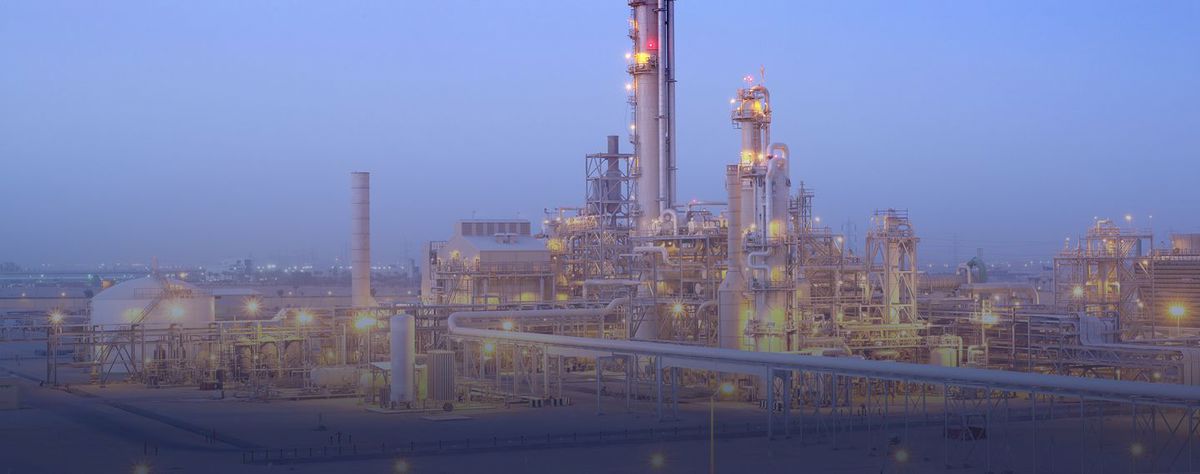The Week in Alternative Fuels
Here are some key developments in alternative bunker fuels from the past week.
 PHOTO: OCI Beaumont is an integrated methanol and ammonia production facility located on the Gulf Coast near Beaumont, Texas, US. OCI
PHOTO: OCI Beaumont is an integrated methanol and ammonia production facility located on the Gulf Coast near Beaumont, Texas, US. OCI
Supply-side developments in methanol and biofuels made headlines this week. While both fuel candidates have their distinctive characteristics, one aspect that unites them is their technological readiness, which give them an edge over ammonia.
Biodiesel has a similar combustion performance to oil-based fuels and can be consumed by ships without substantial engine or vessel modifications. This means that vessels don't have to be retrofitted to use them, reducing the upfront cost and complexity of their transition.
Bio-LNG or liquefied biomethane (LBM) can function as a drop-in fuel in liquefied natural gas (LNG). Vessels capable of running on LNG won’t need to be modified to run on pure LBM or LBM-LNG blends. Technologies to retrofit vessels to burn methanol as a fuel - such as engines and fuel tanks - are available today.
Ahmed El-Hoshy chief executive of Dutch methanol producer OCI anticipated that demand for methanol will rise above 3 million mt/year by the middle of the decade “based on current orders from the container vessel segment alone.” According to DNV, only 25 vessels are capable of running on methanol in the global fleet today, but the methanol-fuelled fleet is set to almost double with 47 vessels ordered for delivery by the middle of the decade.
Singapore-based bunker supplier Golden Island aims to supply methanol as a marine fuel in Singapore from 2026, a company representative told ENGINE. Golden Island will initially start offering grey (fossil) methanol, but plans to offer green (renewable) methanol in the future.
A coalition led by the Global Centre for Maritime Decarbonisation (GCMD) has tested how well two biofuel supply chains work. Five ships bunkered about 4,700 mt of Used Cooking Oil Methyl Ester (UCOME) in Singapore during the first phase. In the second one, TotalEnergies Marine Fuels supplied an LPG tanker with a blend of B24 bio-VLSFO.
Biofuels were tracked from their production plants located in different parts of the world to Singapore, where they were later blended and bunkered, GCMD’s chief executive Lynn Loo said.
Mitsui O.S.K. Lines (MOL) and Air Water announced that they would explore supply and transportation of LBM using existing infrastructure to fuel MOL’s vessels. Air Water will produce LBM from cattle manure in Japan's Tokachi region. LBM is produced by processing organic waste streams, manure, and sewage sludge.
Shell acquired Europe’s largest biomethane producer Nature Energy Biogas. As a result, it will own Nature Energy's 14 operating biomethane plants that have “current 2022 production of around 6.5 million mmbtu/year [million British thermal unit],” said Shell. Last November, Nature Energy announced that it would produce 120,000 mt/year of liquified biogas (LBG) for vessels docked at Denmark’s Frederikshavn port.
By Konica Bhatt
Here is our selection of five top alternative fuels stories from this week:
Methanol bunker to exceed 3 million mt/year by the mid-2020s – OCI
Golden Island plans methanol bunkering in Singapore from 2026
GCMD-led coalition completes two biofuel supply chain trials
MOL looking to bunker LNG-fuelled vessels with liquefied biomethane
Shell completes purchase of Danish biogas producer Nature Energy





